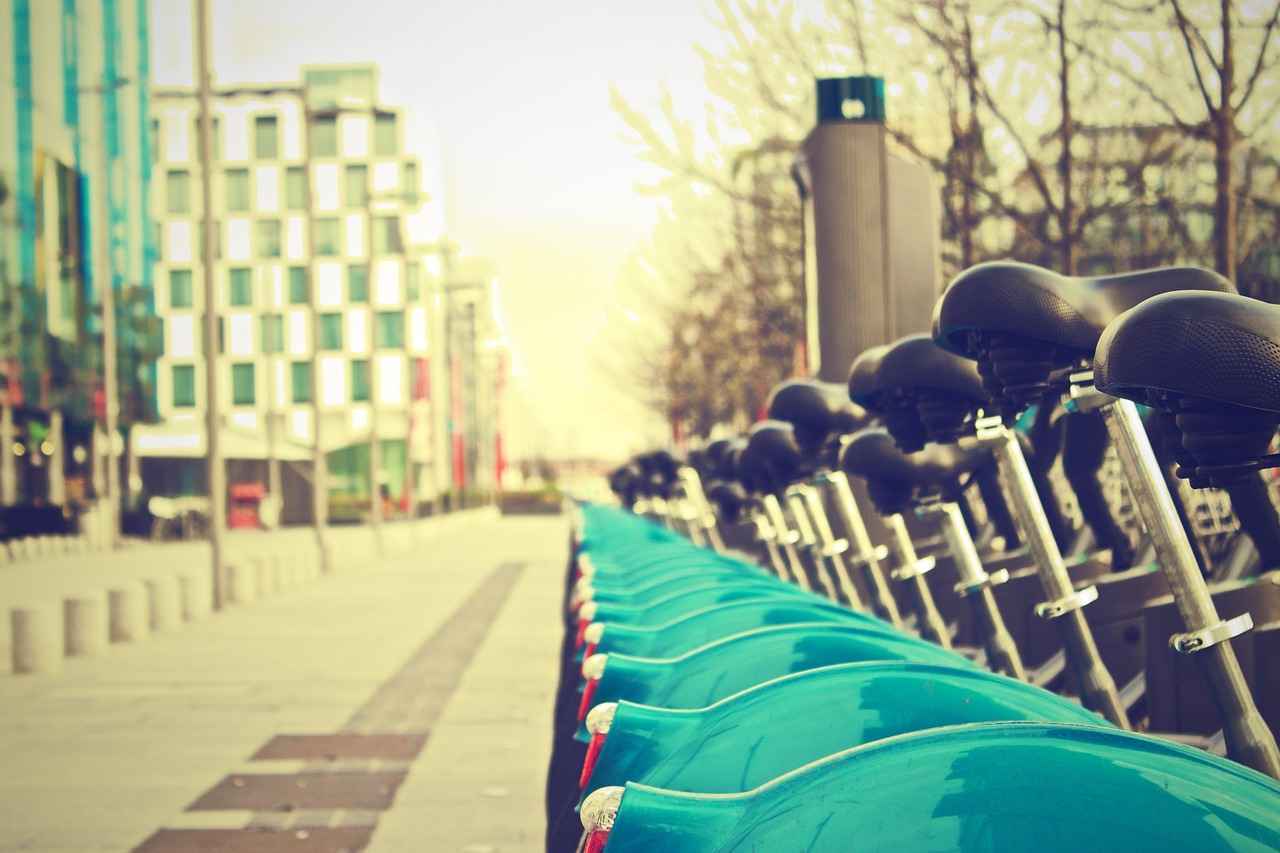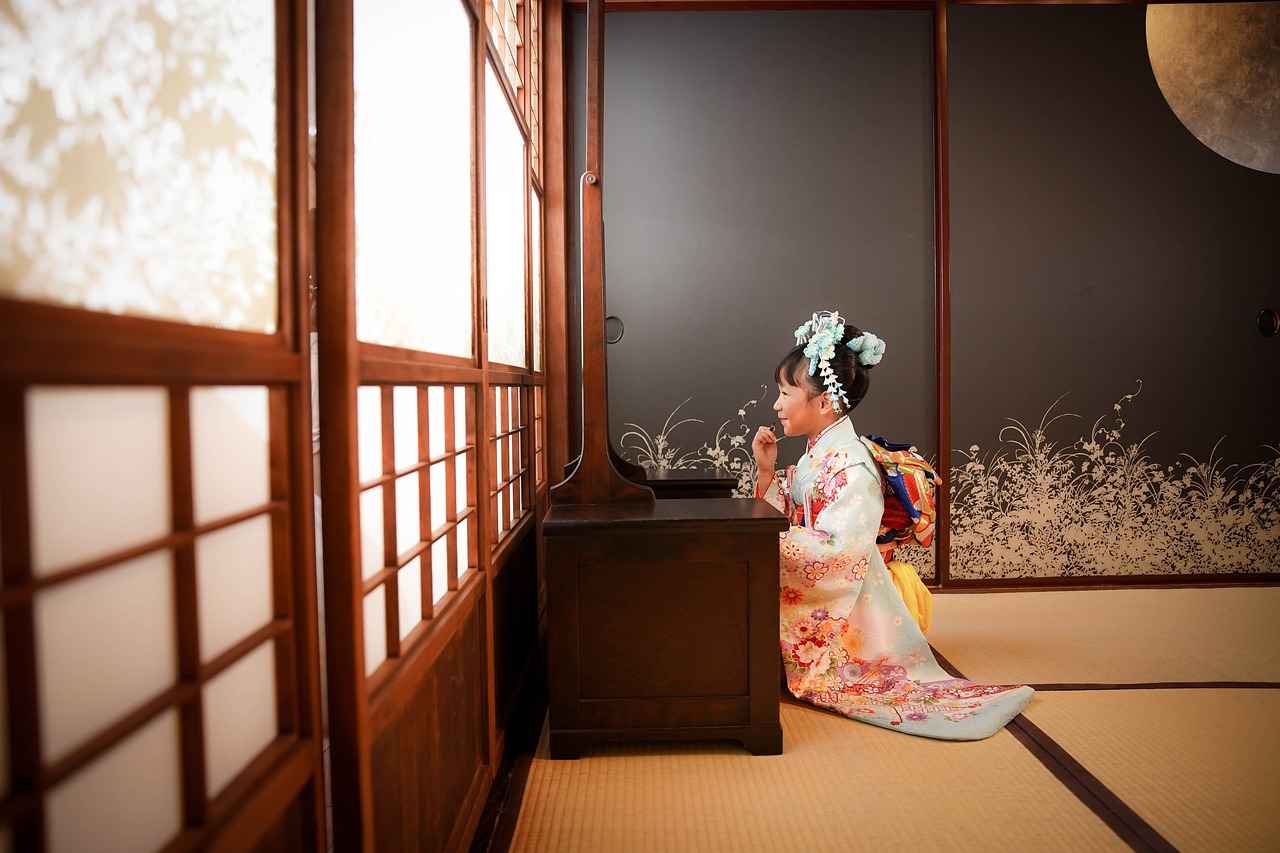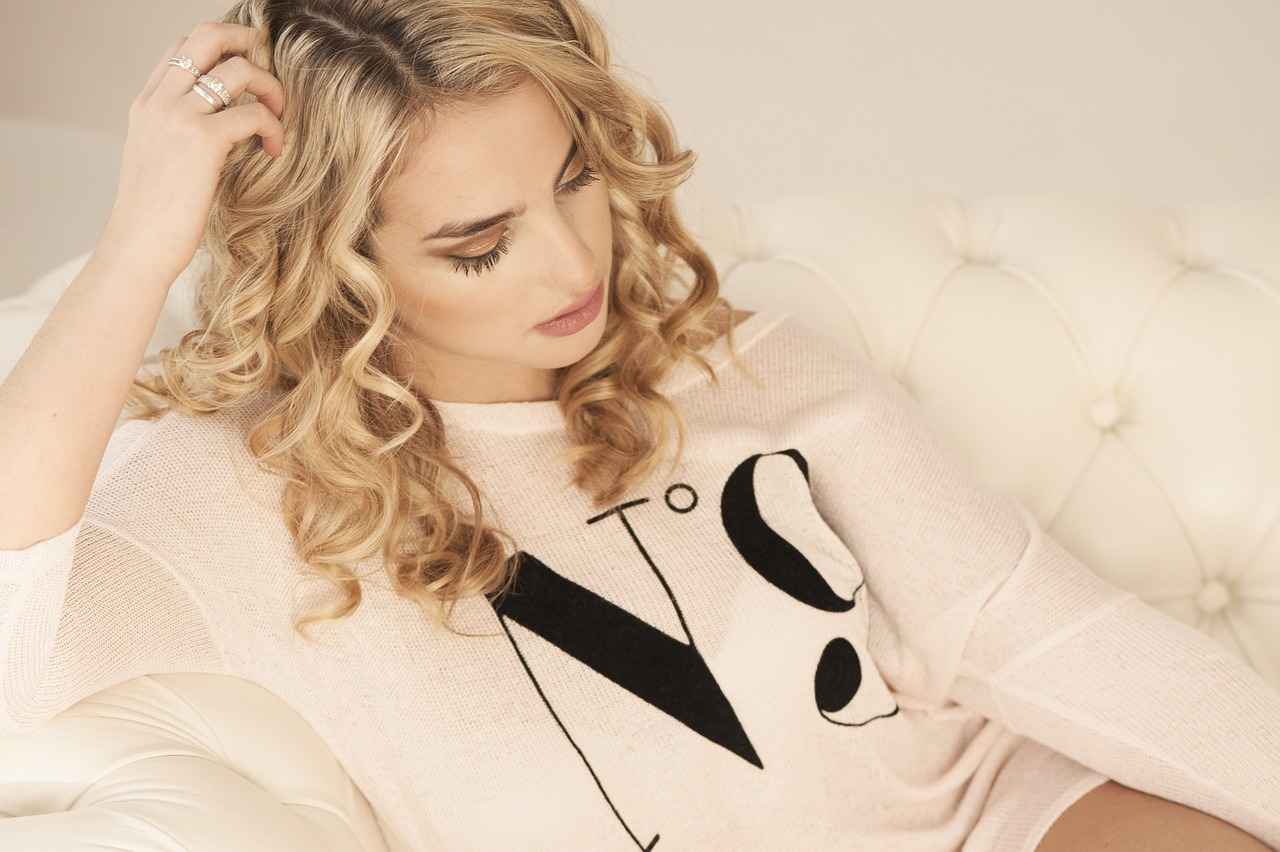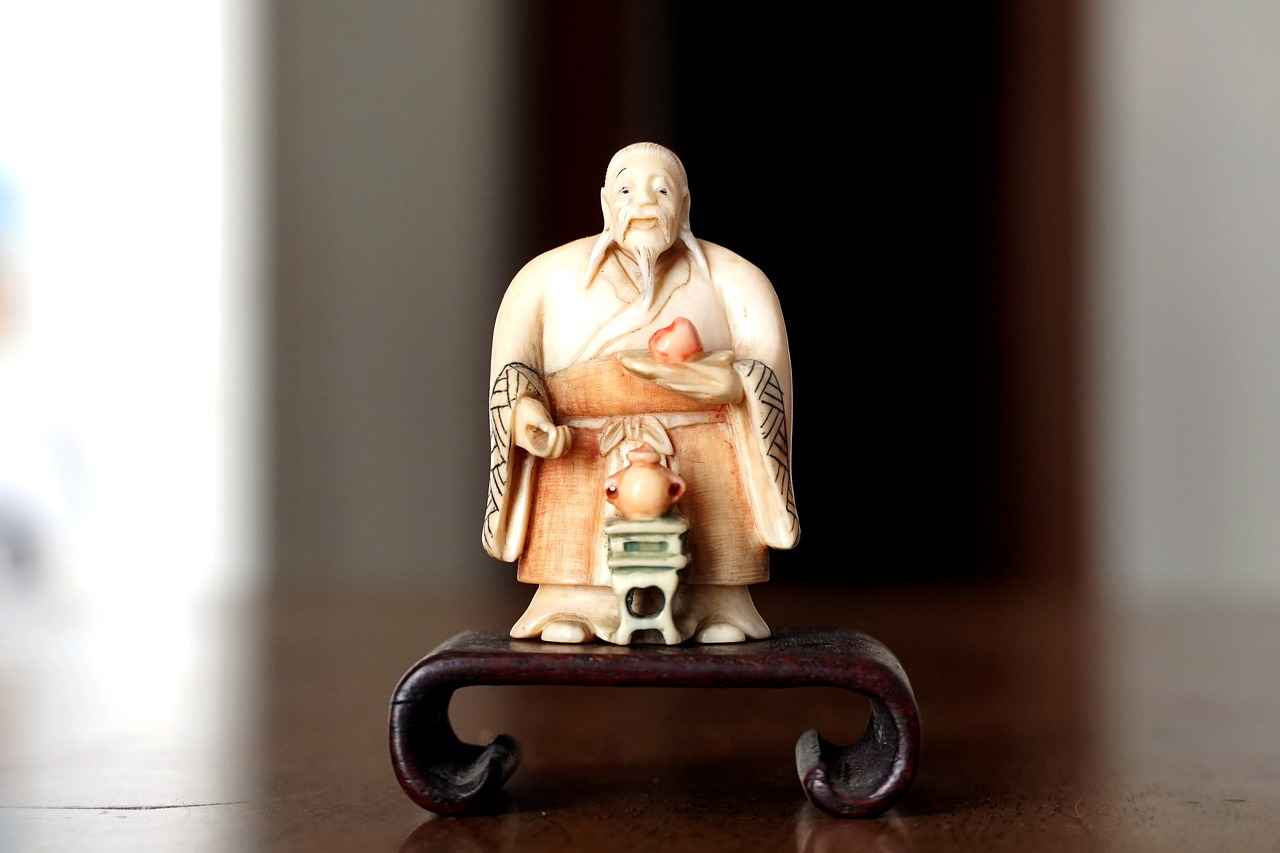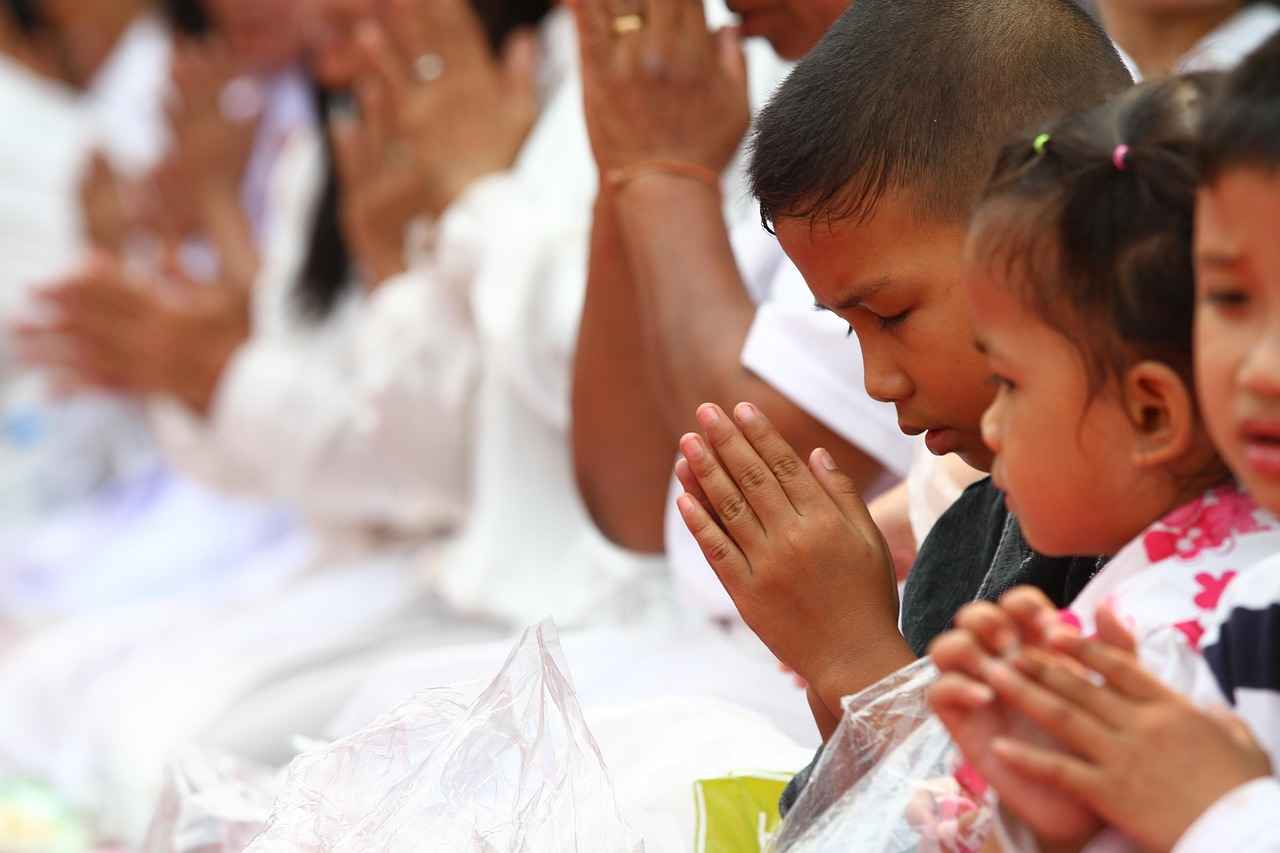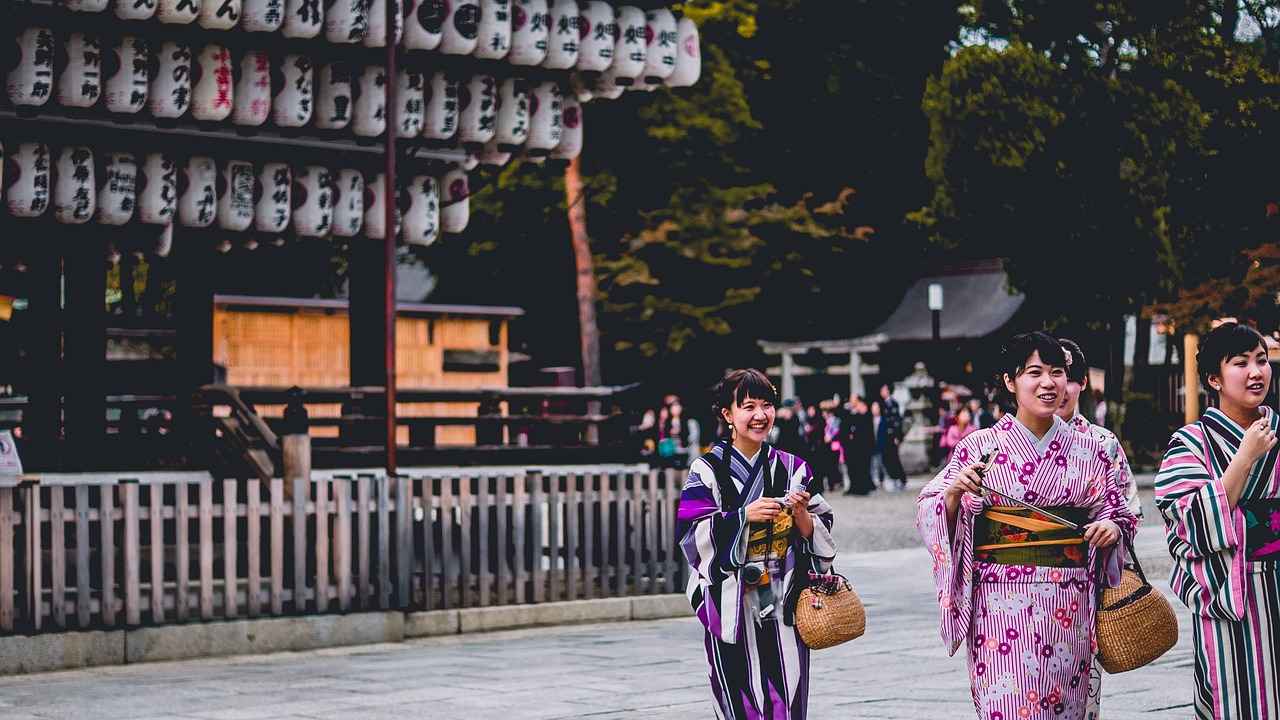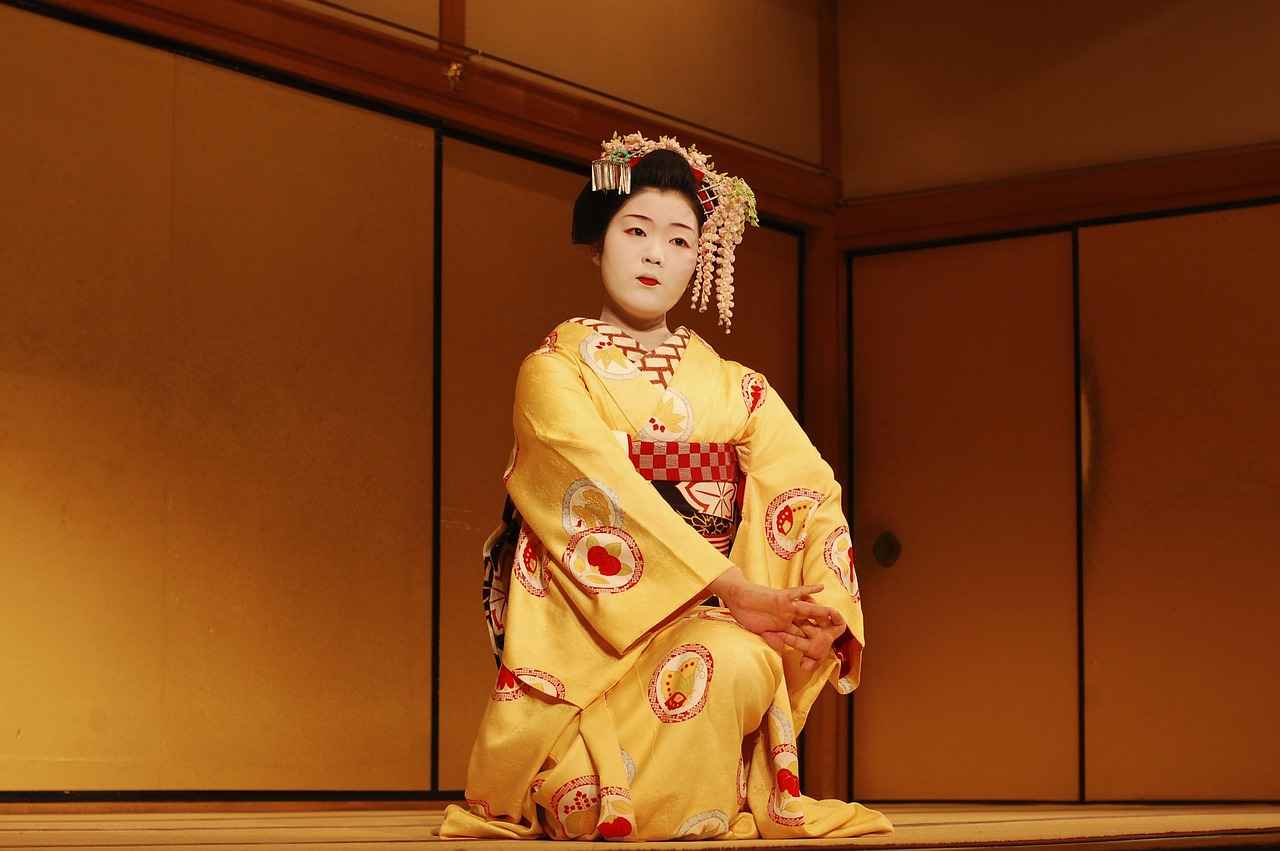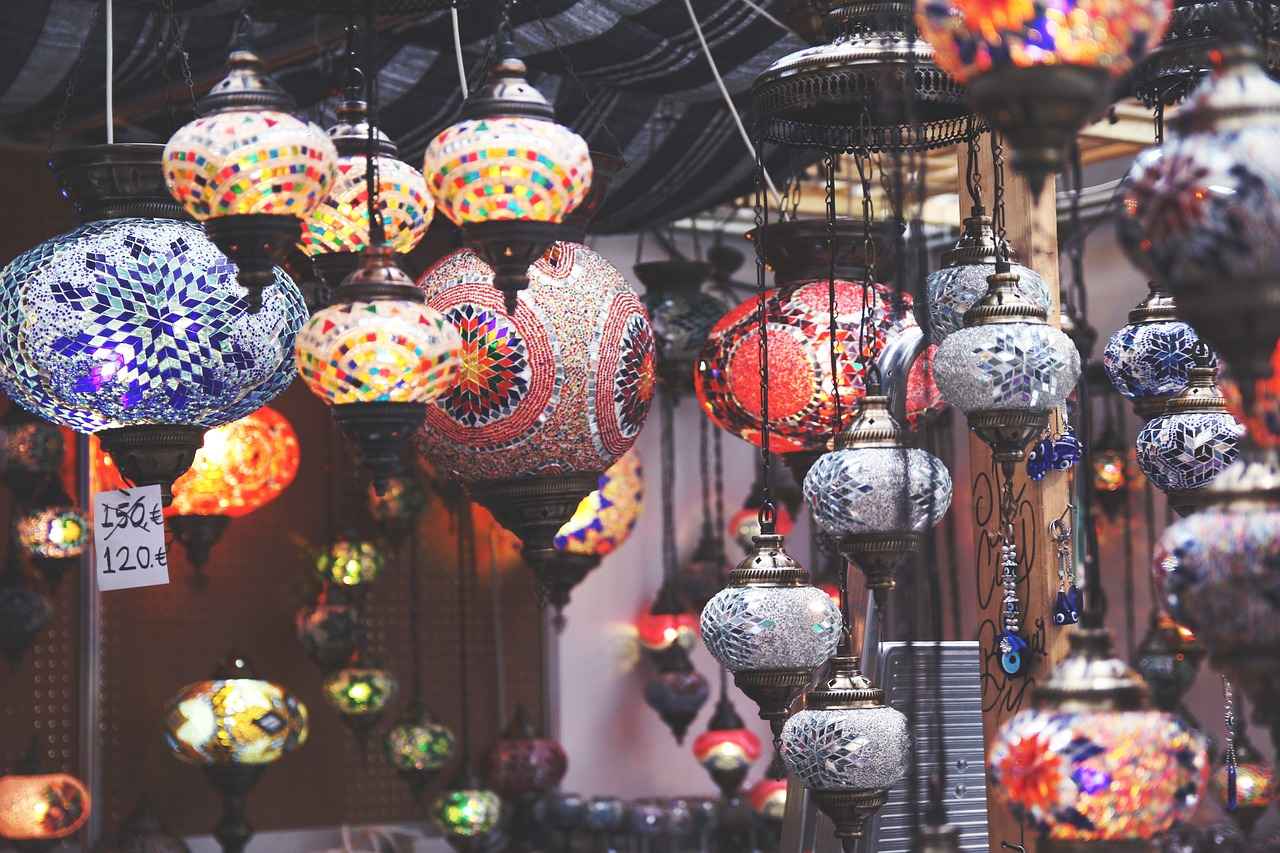This article provides a comprehensive guide to kimono rental in Asakusa, covering everything from choosing the right kimono to tips for a memorable experience.
Why Choose Kimono Rental in Asakusa?
Asakusa is renowned for its rich cultural heritage, making it an ideal location to experience traditional Japanese attire. Renting a kimono here not only enhances your visit but also allows for stunning photographs against the backdrop of historic sites.
Types of Kimonos Available for Rent
There are several styles of kimonos available for rent, each with unique designs and purposes:
- Yukata: A casual summer kimono made of lightweight cotton, perfect for warm weather, festivals, and casual outings.
- Furisode: A formal kimono with long sleeves and vibrant colors, ideal for special occasions like weddings and ceremonies.
What to Consider When Renting a Kimono
Before renting a kimono, consider the following factors:
- Size and Fit: Ensure you find a kimono that fits well; most rental shops offer assistance in choosing the right size.
- Rental Duration and Pricing: Prices may vary based on style and shop, so understanding the pricing structure is essential for budgeting.
Where to Rent Kimonos in Asakusa
Asakusa boasts numerous kimono rental shops, each offering distinct services:
- Yae
- Asakusa Kimono Rental
- Kimonoya
It’s advisable to book in advance, especially during peak tourist seasons, to ensure availability.
How to Wear a Kimono Properly
Wearing a kimono correctly enhances both comfort and aesthetics. Key points include:
- Layering and Accessories: Learn to layer properly with obi and obijime for added elegance.
- Footwear and Etiquette: Traditional footwear, such as geta or zori, is essential, and understanding kimono etiquette enhances cultural appreciation.
Tips for Taking Photos in Kimono
Asakusa offers beautiful backdrops for photography:
- Best Locations for Photos: Iconic sites like Senso-ji Temple and Nakamise Street are perfect for capturing memories.
- Posing Tips: Maintain good posture and natural expressions to enhance your photos.
Conclusion: Enjoying Your Kimono Experience in Asakusa
Renting a kimono in Asakusa is a unique way to immerse yourself in Japanese culture. By following these tips, you can ensure a memorable and enjoyable experience.

Why Choose Kimono Rental in Asakusa?
Asakusa is renowned for its rich cultural heritage, making it a prime destination for those wishing to immerse themselves in traditional Japanese attire. The experience of renting a kimono in this historic district not only enhances your visit but also provides a unique opportunity for stunning photography against the backdrop of iconic landmarks.
When you don a kimono, you are not merely wearing a garment; you are embracing a piece of Japan’s history. This cultural attire is deeply embedded in the Japanese way of life, symbolizing grace, elegance, and tradition. Renting a kimono in Asakusa allows visitors to connect with these cultural narratives while exploring the vibrant streets filled with ancient temples, bustling markets, and serene parks.
Moreover, the experience is tailored to cater to all visitors. Rental shops in Asakusa offer a wide variety of kimonos, from casual yukatas perfect for summer festivals to exquisite furisodes suitable for formal occasions. This diversity ensures that everyone can find an outfit that resonates with their personal style and the nature of their visit.
Additionally, many rental shops provide professional dressing services, allowing you to appreciate the intricate process of putting on a kimono. This guided experience can be both educational and enjoyable, enriching your understanding of Japanese customs.
Finally, the opportunity for beautiful photographs cannot be overstated. With Asakusa’s stunning scenery, including the famous Senso-ji Temple and the picturesque Nakamise Street, you will have countless chances to capture memories in your kimono, making your visit truly unforgettable.
In conclusion, renting a kimono in Asakusa is not just about fashion; it’s about experiencing Japanese culture in a meaningful way. Whether for a special occasion or simply to enjoy the beauty of traditional attire, Asakusa offers the perfect setting for this enriching experience.
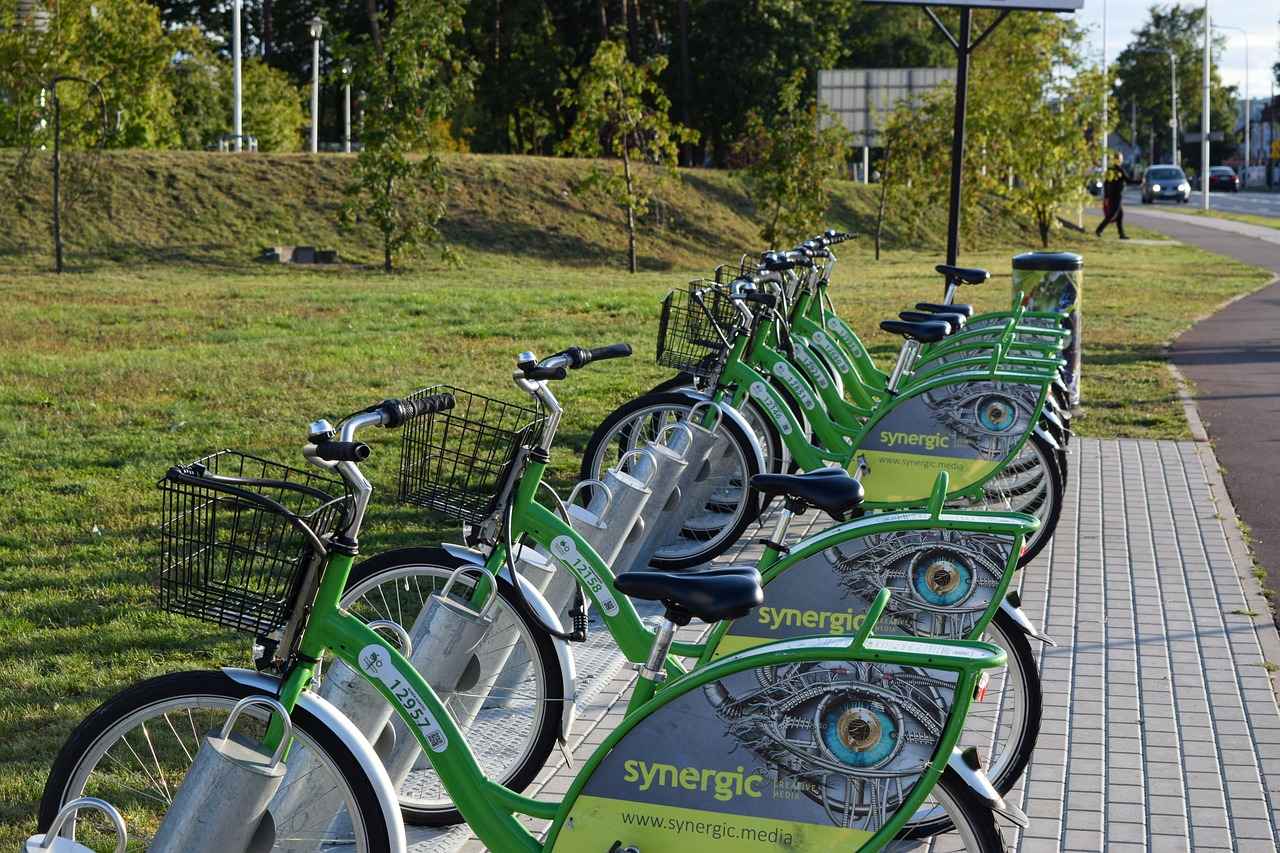
Types of Kimonos Available for Rent
When it comes to experiencing traditional Japanese culture, renting a kimono in Asakusa is a fantastic choice. The variety of kimonos available for rent caters to different occasions and personal styles. Understanding these types can significantly enhance your experience and help you choose the right outfit for your special day.
- Yukata: This is a casual summer kimono made from lightweight cotton, perfect for warm weather. Yukatas are often worn during festivals and casual outings. Their vibrant colors and patterns make them a favorite among tourists looking to enjoy the summer festivities in Asakusa.
- Furisode: Known for its long sleeves and bright colors, the Furisode is a formal kimono typically worn by young women during special occasions such as weddings and traditional ceremonies. Its elegant design makes it a popular choice for those wanting to make a statement.
- Hakama: This is a traditional Japanese garment that is often worn over a kimono. The Hakama is typically associated with formal occasions and is commonly worn during graduation ceremonies or tea ceremonies. Its unique design features wide pleats, offering both style and comfort.
- Tomesode: A formal kimono, the Tomesode is characterized by its shorter sleeves and elegant designs. It is often worn by married women during formal events. The intricate patterns and colors of a Tomesode reflect the wearer’s status and the occasion’s significance.
- Shiro-muku: This is a pure white kimono traditionally worn by brides during Shinto weddings. The Shiro-muku symbolizes purity and is often accompanied by elaborate accessories, making it a stunning choice for one of life’s most important events.
Each of these kimono styles carries its own significance and charm. By understanding the differences, you can select the perfect outfit that not only fits the occasion but also allows you to immerse yourself fully in the beauty of Japanese culture.
Yukata: The Summer Kimono
Yukata is a traditional Japanese garment that embodies the essence of summer. Made from lightweight cotton, it is designed for comfort and breathability during the warm months. This casual summer kimono is especially popular among tourists and locals alike, making it a staple at various festivals and casual outings throughout Japan, particularly in vibrant neighborhoods like Asakusa.
The yukata is often characterized by its vibrant colors and distinctive patterns, which can range from floral motifs to geometric designs. This versatility allows individuals to express their personal style while embracing traditional Japanese culture. Typically worn during summer festivals, it is common to see yukata-clad individuals enjoying fireworks displays and traditional games.
One of the great advantages of wearing a yukata is its ease of use. Unlike more formal kimonos, the yukata is simpler to put on, making it an excellent choice for those who may be new to traditional Japanese attire. Many rental shops in Asakusa offer yukata rentals, providing a hassle-free way to experience this beautiful garment without the commitment of purchasing one.
When renting a yukata, consider factors such as size, design, and accessories. Most rental shops provide assistance to ensure you find the perfect fit. Accessories like obi (sashes) and geta (traditional footwear) can enhance your overall look, adding an authentic touch to your outfit.
Asakusa is not only a great place to rent a yukata but also an ideal location for capturing stunning photographs. Iconic spots like Senso-ji Temple and the bustling Nakamise Street serve as beautiful backdrops for your yukata experience. With the right timing and poses, you can create lasting memories of your time spent in this enchanting neighborhood.
In conclusion, the yukata is more than just a summer kimono; it is a celebration of Japanese culture and tradition. Whether you are attending a festival or simply exploring Asakusa, donning a yukata allows you to immerse yourself in the rich heritage of Japan while enjoying the warmth of summer.
Furisode: The Formal Kimono
Furisode is a traditional Japanese kimono that stands out due to its long sleeves and vibrant colors. Typically worn by young women, this formal attire is often associated with significant life events such as weddings, coming-of-age ceremonies, and other special occasions. The name “furisode” translates to “swinging sleeves,” which reflects the graceful movement of the sleeves as the wearer walks.
The design of a furisode is not only aesthetically pleasing but also rich in symbolism. The colors and patterns often convey meanings, such as happiness, prosperity, and good fortune. Common motifs include flowers, birds, and geometric shapes, each chosen for their cultural significance. Young women often wear furisode during their seijin shiki (coming-of-age ceremony) at the age of 20, marking their transition into adulthood.
When selecting a furisode, it’s essential to consider factors such as fabric, color, and design. Most furisode are made from luxurious materials like silk, which enhances their elegance and drape. Additionally, the choice of colors can reflect the season or the specific event being attended. For instance, pastel shades are popular in spring, while deeper tones might be favored for autumn ceremonies.
Wearing a furisode involves more than just putting on the garment; it requires specific accessories and proper layering. The obi (sash) is crucial for securing the kimono and is often elaborately tied in a decorative knot at the back. Completing the look with traditional footwear, such as geta or zori, adds to the overall aesthetic and cultural authenticity.
In conclusion, the furisode is more than just a piece of clothing; it is a representation of Japanese culture and tradition. Whether you are attending a formal event or celebrating a milestone, donning a furisode allows you to connect with Japan’s rich heritage and beauty.
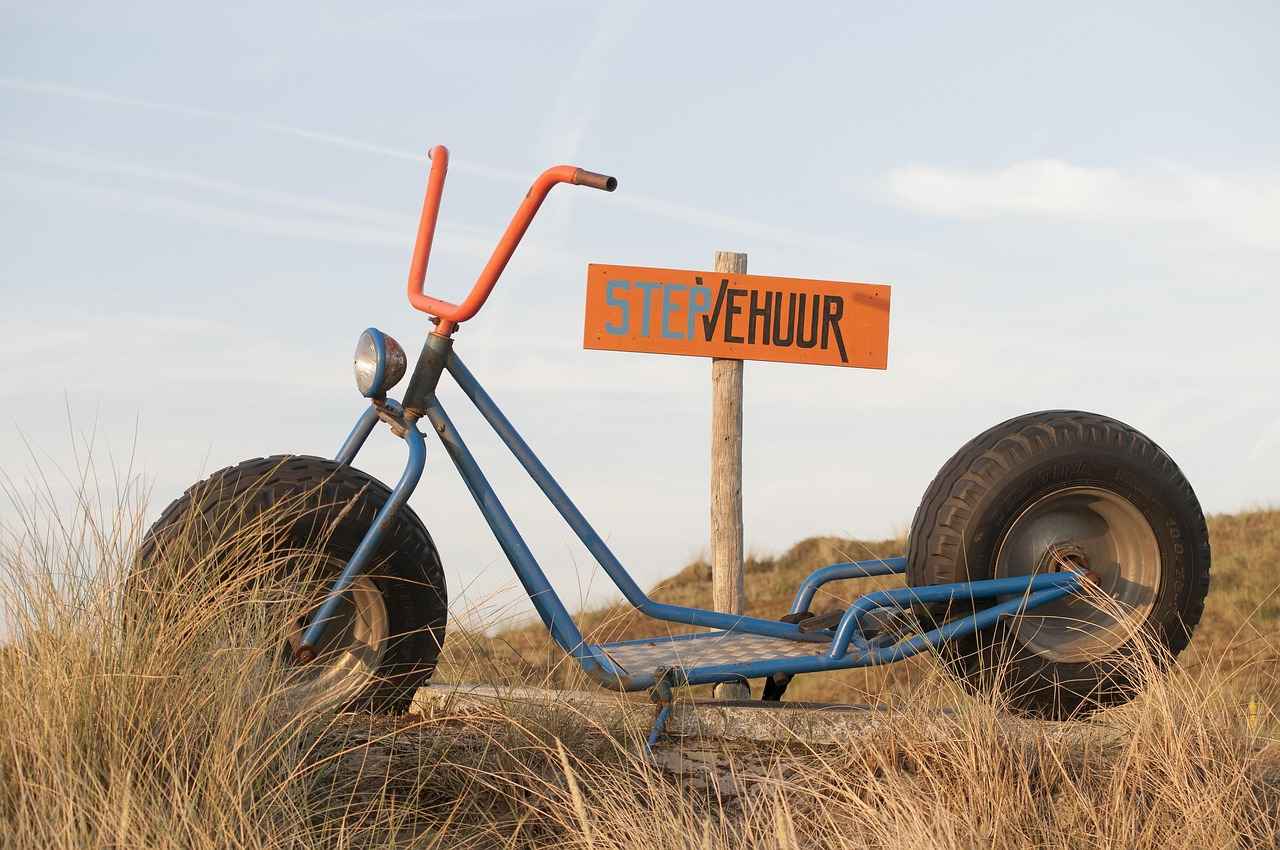
What to Consider When Renting a Kimono
Renting a kimono can be an exciting experience, especially in a culturally rich area like Asakusa. However, before making your choice, there are several important factors to consider to ensure that your experience is both comfortable and memorable.
- Size and Fit: Kimonos come in various sizes, and finding the right fit is crucial. Most rental shops offer assistance in measuring your body to select the appropriate size. A well-fitted kimono will not only look better but also feel more comfortable.
- Style: There are different styles of kimonos, each suited for various occasions. Whether you prefer the casual yukata for summer festivals or the more formal furisode for special events, understanding these styles will help you make an informed decision.
- Rental Duration: Consider how long you plan to wear the kimono. Rental durations can vary from a few hours to a full day, and this will also affect the pricing. Make sure to choose a duration that allows you to enjoy your time without feeling rushed.
- Pricing: The cost of renting a kimono can vary widely based on the shop and the type of kimono. It’s advisable to check the pricing details in advance to avoid any surprises. Look for packages that may include accessories like obis or footwear.
- Booking in Advance: If you plan to visit during peak tourist seasons, it’s wise to book your kimono rental ahead of time. This ensures that you have a wider selection of kimonos available and helps secure your preferred style.
By considering these factors, you can enhance your kimono rental experience in Asakusa, allowing you to fully immerse yourself in the beauty of traditional Japanese culture.
Size and Fit
When it comes to wearing a kimono, one of the most crucial factors to consider is the size and fit. A well-fitting kimono not only enhances your appearance but also ensures your comfort throughout the day. Kimonos are available in various sizes, catering to different body types. Therefore, it is essential to find the right size that complements your physique.
Most kimono rental shops in Asakusa offer personalized assistance to help you choose the perfect size. Experienced staff can guide you through the selection process, taking into account your height, weight, and body shape. They will often have a range of sizes, including options for petite, standard, and plus sizes, ensuring that everyone can enjoy this beautiful traditional attire.
Additionally, it’s important to understand that kimonos are designed to be worn in a specific way. The fabric is typically wrapped around the body and tied with an obi, which can affect how the kimono fits. A properly fitted kimono should allow for some movement while still maintaining a polished look. If the kimono is too tight, it may restrict your movement; if it’s too loose, it may not present the desired silhouette.
Before making your final decision, consider trying on a few different styles and sizes. This will give you a better idea of what works best for you. Don’t hesitate to ask the rental shop staff for their recommendations based on your body type and the occasion for which you are renting the kimono.
In conclusion, taking the time to find the right size and fit for your kimono will greatly enhance your overall experience in Asakusa. A well-fitted kimono not only looks stunning but also allows you to fully embrace the cultural experience of wearing this iconic garment.
Rental Duration and Pricing
When planning your kimono rental experience in Asakusa, it’s crucial to understand the rental durations and pricing structures that various shops offer. This knowledge will not only help you make an informed decision but also allow you to budget effectively for your cultural adventure.
The duration for which you can rent a kimono typically varies from a few hours to an entire day. Many shops offer flexible rental periods, catering to different needs. For instance, if you’re planning a quick visit to the Senso-ji Temple, a half-day rental might suffice. However, if you wish to explore Asakusa at a leisurely pace and take plenty of photos, consider a full-day rental.
Pricing for kimono rentals can also differ significantly based on several factors:
- Kimono Style: Traditional kimonos, such as the Furisode, often come at a higher price point compared to casual options like the Yukata.
- Rental Shop: Each rental shop has its own pricing strategy, influenced by the quality of kimonos, customer service, and additional services offered, like hair styling or photography.
- Seasonality: Prices may increase during peak tourist seasons, so it’s wise to check in advance and compare rates.
To ensure you stay within your budget, it’s advisable to inquire about any hidden fees, such as cleaning charges or deposit requirements, before finalizing your rental. Some shops may offer packages that include accessories, which can provide better value for your money.
In summary, understanding the rental durations and pricing will enhance your kimono experience in Asakusa. By planning ahead and considering your needs, you can enjoy this beautiful aspect of Japanese culture without any financial surprises.

Where to Rent Kimonos in Asakusa
Asakusa is a vibrant district in Tokyo, renowned for its rich cultural heritage and historical sites. When it comes to experiencing traditional Japanese attire, kimono rental shops in Asakusa offer a diverse range of options, making it easier for visitors to immerse themselves in the local culture.
With numerous rental shops available, each shop provides unique services and styles, ensuring that you can find the perfect kimono for your visit. Here are some key considerations and popular rental shops to enhance your kimono experience:
- Yae: Known for its extensive collection of kimonos, Yae offers personalized styling services to help you choose the right outfit for your occasion.
- Asakusa Kimono Rental: This shop is famous for its affordable packages and an array of accessories, making it a favorite among tourists.
- Kimonoya: Renowned for its high-quality kimonos and exceptional customer service, Kimonoya provides a memorable rental experience.
Booking in Advance
To ensure you secure your desired style, it’s advisable to book your kimono rental in advance, especially during peak tourist seasons. Many shops offer online reservations, allowing you to plan your visit with ease.
Choosing the Right Shop
When selecting a rental shop, consider factors such as customer reviews, price ranges, and available styles. Reading reviews can provide insights into the quality of service and the variety of kimonos offered.
Enhancing Your Experience
Many rental shops in Asakusa also provide additional services, such as hair styling and makeup, which can further enhance your overall experience. Taking advantage of these services allows you to fully embrace the traditional look.
In conclusion, renting a kimono in Asakusa offers a unique opportunity to engage with Japanese culture. By choosing the right rental shop and planning ahead, you can create memorable experiences while exploring this historic district.
Popular Rental Shops
Asakusa is a vibrant district in Tokyo, renowned for its historical significance and cultural experiences. When it comes to kimono rental, several shops stand out for their quality and service. Here’s a closer look at some of the most popular rental shops in Asakusa:
- Yae: Known for its extensive collection of traditional kimonos, Yae offers a personalized experience with skilled staff who assist in selecting the perfect outfit. Their attention to detail ensures that every rental is tailored to the customer’s needs.
- Asakusa Kimono Rental: This shop is famous for its modern twist on traditional kimonos, providing a variety of styles suitable for different occasions. They also offer hair styling services, making it a one-stop-shop for your kimono experience.
- Kimonoya: With a reputation for excellent customer service, Kimonoya provides a wide range of kimonos, from casual yukatas to formal furisodes. Their knowledgeable staff helps customers choose outfits that flatter their body types and suit their events.
- Kimono Rental Shizuku: This shop offers a unique selection of vintage kimonos, allowing visitors to experience a piece of history. They also provide various accessories to complete the look, ensuring a memorable experience.
- Asakusa Kimonos: Specializing in family rentals, this shop caters to groups looking to dress up together. They offer matching kimonos for family photos, making it a popular choice for tourists.
When planning your visit to Asakusa, consider booking your kimono rental in advance, especially during peak seasons. This ensures you secure the style you desire and enjoy a hassle-free experience.
With these options at your disposal, you can immerse yourself in the rich culture of Japan while capturing beautiful memories in stunning kimonos.
Yae,
Yae: Your Ultimate Kimono Rental Experience in Asakusa
Asakusa, a district steeped in tradition, offers an unparalleled opportunity for visitors to immerse themselves in Japanese culture through kimono rental. One of the standout options for kimono rental in this vibrant area is Yae, known for its exceptional service and a wide selection of beautiful kimonos.
Why Choose Yae for Kimono Rental?
- Quality Selection: Yae offers a diverse range of kimonos, from casual yukatas to formal furisodes, ensuring that every visitor finds the perfect outfit.
- Expert Assistance: The staff at Yae are knowledgeable and friendly, ready to help you choose the right kimono based on your style and occasion.
- Convenient Location: Located in the heart of Asakusa, Yae is easily accessible, allowing you to explore nearby attractions in your rented kimono.
What to Expect When Renting from Yae
When you arrive at Yae, you will be greeted with a warm welcome. The rental process is straightforward:
- Select your kimono from a vast array of options.
- Receive assistance with fitting and styling.
- Complete the rental paperwork and enjoy your day in Asakusa!
Tips for a Memorable Kimono Experience
- Book in Advance: To ensure you get your desired kimono, especially during peak tourist seasons, booking ahead is highly recommended.
- Take Care of Your Kimono: Follow the rental shop’s guidelines for wearing and returning the kimono to avoid any extra charges.
- Capture the Moment: Don’t forget to take photos at iconic locations like Senso-ji Temple to make your experience unforgettable.
Conclusion: Embrace the Culture with Yae
Renting a kimono from Yae in Asakusa is not just about wearing traditional clothing; it’s about embracing a unique cultural experience. With a wide selection, expert guidance, and a prime location, Yae is your go-to destination for kimono rental in Asakusa.
Kimono Rental in Asakusa: What You Need to Know Before Booking
This article provides a comprehensive guide to kimono rental in Asakusa, covering everything from choosing the right kimono to tips for a memorable experience.
Why Choose Kimono Rental in Asakusa?
Asakusa is famous for its rich cultural heritage, making it the perfect location to experience traditional Japanese attire. Renting a kimono here enhances your visit and allows for stunning photos.
Types of Kimonos Available for Rent
- Yukata: The Summer Kimono – A casual summer kimono made of lightweight cotton, popular among tourists for warm weather and festivals.
- Furisode: The Formal Kimono – Characterized by long sleeves and vibrant colors, ideal for special occasions like weddings.
What to Consider When Renting a Kimono
- Size and Fit – It’s essential to find a kimono that fits well. Most rental shops assist in choosing the right size.
- Rental Duration and Pricing – Rental durations vary, and prices differ based on style and shop. Understanding the pricing structure helps in budgeting.
Where to Rent Kimonos in Asakusa
- Popular Rental Shops – Notable shops include Yae, Asakusa Kimono Rental, and Kimonoya, known for quality kimonos and excellent service.
- Booking in Advance – It’s advisable to book in advance, especially during peak seasons, to ensure availability.
How to Wear a Kimono Properly
- Layering and Accessories – Kimonos are worn with layers and accessories such as obi and obijime for elegance.
- Footwear and Etiquette – Traditional footwear like geta or zori is essential, along with understanding kimono etiquette.
Tips for Taking Photos in Kimono
- Best Locations for Photos – Iconic locations like Senso-ji Temple and Nakamise Street offer picturesque settings.
- Posing Tips – Maintaining good posture and natural expressions can improve your photos.
Conclusion: Enjoying Your Kimono Experience in Asakusa
Renting a kimono in Asakusa is a unique way to immerse yourself in Japanese culture. By following these tips and insights, you can ensure a memorable and enjoyable experience.
Asakusa Kimono Rental,
Kimono Rental in Asakusa: What You Need to Know Before Booking
This article provides a comprehensive guide to kimono rental in Asakusa, covering everything from choosing the right kimono to tips for a memorable experience.
Why Choose Kimono Rental in Asakusa?
Asakusa is famous for its rich cultural heritage, making it the perfect location to experience traditional Japanese attire. Renting a kimono here enhances your visit and allows for stunning photos.
Types of Kimonos Available for Rent
There are various styles of kimonos available for rent, each with unique designs and purposes. Understanding the differences can help you select the perfect outfit for your occasion.
- Yukata: The Summer Kimono – Yukata is a casual summer kimono made of lightweight cotton. It’s popular among tourists and perfect for warm weather, festivals, and casual outings in Asakusa.
- Furisode: The Formal Kimono – Furisode is a formal kimono characterized by long sleeves and vibrant colors. Often worn by young women, it’s ideal for special occasions like weddings and ceremonies.
What to Consider When Renting a Kimono
Before renting a kimono, there are several factors to consider, including size, style, and rental duration. Making informed choices ensures a comfortable and enjoyable experience.
- Size and Fit: Kimonos come in various sizes, and it’s essential to find one that fits well. Most rental shops provide assistance in choosing the right size for your body type.
- Rental Duration and Pricing: Rental durations can vary, and prices may differ based on the kimono style and rental shop. Understanding the pricing structure helps you budget appropriately for your experience.
Where to Rent Kimonos in Asakusa
Asakusa has numerous kimono rental shops, each offering distinct services and styles. Knowing where to go can enhance your overall experience and satisfaction.
- Popular Rental Shops: Some of the most popular rental shops in Asakusa include Yae, Asakusa Kimono Rental, and Kimonoya, each known for their quality kimonos and excellent customer service.
- Booking in Advance: It’s advisable to book your kimono rental in advance, especially during peak tourist seasons. This ensures availability and allows you to secure the style you desire.
How to Wear a Kimono Properly
Wearing a kimono correctly is essential for both comfort and aesthetics. Understanding the basics of kimono dressing can enhance your overall experience and appearance.
- Layering and Accessories: Kimonos are typically worn with various layers and accessories, including obi (sashes) and obijime (decorative cords). Learning how to layer properly adds elegance to your outfit.
- Footwear and Etiquette: Traditional footwear, such as geta or zori, is essential when wearing a kimono. Additionally, understanding the etiquette associated with kimono wear enhances cultural appreciation and respect.
Tips for Taking Photos in Kimono
Asakusa offers stunning backdrops for photography. Knowing how to pose and where to go can help you capture beautiful memories in your kimono.
- Best Locations for Photos: Iconic locations like Senso-ji Temple and Nakamise Street provide picturesque settings for your kimono photos. Timing your visit for the best lighting can enhance your pictures.
- Posing Tips: Simple posing tips, such as maintaining good posture and using natural expressions, can significantly improve your photos. Practicing a few poses before your rental can boost your confidence.
Conclusion: Enjoying Your Kimono Experience in Asakusa
Renting a kimono in Asakusa is a unique way to immerse yourself in Japanese culture. By following these tips and insights, you can ensure a memorable and enjoyable experience.
and
Kimono Rental in Asakusa: What You Need to Know Before Booking
This article provides a comprehensive guide to kimono rental in Asakusa, covering everything from choosing the right kimono to tips for a memorable experience.
Why Choose Kimono Rental in Asakusa?
Asakusa is famous for its rich cultural heritage, making it the perfect location to experience traditional Japanese attire. Renting a kimono here enhances your visit and allows for stunning photos.
Types of Kimonos Available for Rent
There are various styles of kimonos available for rent, each with unique designs and purposes. Understanding the differences can help you select the perfect outfit for your occasion.
- Yukata: The Summer Kimono – Yukata is a casual summer kimono made of lightweight cotton. It’s popular among tourists and perfect for warm weather, festivals, and casual outings in Asakusa.
- Furisode: The Formal Kimono – Furisode is a formal kimono characterized by long sleeves and vibrant colors. Often worn by young women, it’s ideal for special occasions like weddings and ceremonies.
What to Consider When Renting a Kimono
Before renting a kimono, there are several factors to consider, including size, style, and rental duration. Making informed choices ensures a comfortable and enjoyable experience.
- Size and Fit – Kimonos come in various sizes, and it’s essential to find one that fits well. Most rental shops provide assistance in choosing the right size for your body type.
- Rental Duration and Pricing – Rental durations can vary, and prices may differ based on the kimono style and rental shop. Understanding the pricing structure helps you budget appropriately for your experience.
Where to Rent Kimonos in Asakusa
Asakusa has numerous kimono rental shops, each offering distinct services and styles. Knowing where to go can enhance your overall experience and satisfaction.
- Popular Rental Shops – Some of the most popular rental shops in Asakusa include Yae, Asakusa Kimono Rental, and Kimonoya, each known for their quality kimonos and excellent customer service.
- Booking in Advance – It’s advisable to book your kimono rental in advance, especially during peak tourist seasons. This ensures availability and allows you to secure the style you desire.
How to Wear a Kimono Properly
Wearing a kimono correctly is essential for both comfort and aesthetics. Understanding the basics of kimono dressing can enhance your overall experience and appearance.
- Layering and Accessories – Kimonos are typically worn with various layers and accessories, including obi (sashes) and obijime (decorative cords). Learning how to layer properly adds elegance to your outfit.
- Footwear and Etiquette – Traditional footwear, such as geta or zori, is essential when wearing a kimono. Additionally, understanding the etiquette associated with kimono wear enhances cultural appreciation and respect.
Tips for Taking Photos in Kimono
Asakusa offers stunning backdrops for photography. Knowing how to pose and where to go can help you capture beautiful memories in your kimono.
- Best Locations for Photos – Iconic locations like Senso-ji Temple and Nakamise Street provide picturesque settings for your kimono photos. Timing your visit for the best lighting can enhance your pictures.
- Posing Tips – Simple posing tips, such as maintaining good posture and using natural expressions, can significantly improve your photos. Practicing a few poses before your rental can boost your confidence.
Conclusion: Enjoying Your Kimono Experience in Asakusa
Renting a kimono in Asakusa is a unique way to immerse yourself in Japanese culture. By following these tips and insights, you can ensure a memorable and enjoyable experience.
Kimonoya,
Kimono Rental in Asakusa: What You Need to Know Before Booking
This article provides a comprehensive guide to kimono rental in Asakusa, covering everything from choosing the right kimono to tips for a memorable experience.
Why Choose Kimono Rental in Asakusa?
Asakusa is famous for its rich cultural heritage, making it the perfect location to experience traditional Japanese attire. Renting a kimono here enhances your visit and allows for stunning photos.
Types of Kimonos Available for Rent
- Yukata: The Summer Kimono – A casual summer kimono made of lightweight cotton, perfect for warm weather, festivals, and casual outings in Asakusa.
- Furisode: The Formal Kimono – A formal kimono characterized by long sleeves and vibrant colors, ideal for special occasions like weddings and ceremonies.
What to Consider When Renting a Kimono
- Size and Fit: Kimonos come in various sizes, and finding one that fits well is essential for comfort.
- Rental Duration and Pricing: Rental durations can vary, and prices may differ based on the kimono style and rental shop.
Where to Rent Kimonos in Asakusa
Asakusa has numerous kimono rental shops, each offering distinct services and styles. Popular rental shops include:
- Kimonoya
- Asakusa Kimono Rental
- Yae
Booking in Advance
It’s advisable to book your kimono rental in advance, especially during peak tourist seasons, to ensure availability.
How to Wear a Kimono Properly
- Layering and Accessories: Kimonos are typically worn with various layers and accessories, including obi (sashes) and obijime (decorative cords).
- Footwear and Etiquette: Traditional footwear, such as geta or zori, is essential when wearing a kimono.
Tips for Taking Photos in Kimono
- Best Locations for Photos: Iconic locations like Senso-ji Temple and Nakamise Street provide picturesque settings for your kimono photos.
- Posing Tips: Maintaining good posture and using natural expressions can significantly improve your photos.
Conclusion: Enjoying Your Kimono Experience in Asakusa
Renting a kimono in Asakusa is a unique way to immerse yourself in Japanese culture. By following these tips and insights, you can ensure a memorable and enjoyable experience.
each known for their quality kimonos and excellent customer service.
Kimono Rental in Asakusa: What You Need to Know Before Booking
This article provides a comprehensive guide to kimono rental in Asakusa, covering everything from choosing the right kimono to tips for a memorable experience.
Why Choose Kimono Rental in Asakusa?
Asakusa is famous for its rich cultural heritage, making it the perfect location to experience traditional Japanese attire. Renting a kimono here enhances your visit and allows for stunning photos.
Types of Kimonos Available for Rent
- Yukata: The Summer Kimono – A casual summer kimono made of lightweight cotton, popular among tourists for warm weather and festivals.
- Furisode: The Formal Kimono – Characterized by long sleeves and vibrant colors, ideal for special occasions like weddings.
What to Consider When Renting a Kimono
- Size and Fit: Kimonos come in various sizes, and it’s essential to find one that fits well.
- Rental Duration and Pricing: Prices may vary based on the kimono style and rental shop.
Where to Rent Kimonos in Asakusa
Asakusa has numerous kimono rental shops, including:
- Yae
- Asakusa Kimono Rental
- Kimonoya
Booking in Advance
It’s advisable to book your kimono rental in advance, especially during peak tourist seasons.
How to Wear a Kimono Properly
- Layering and Accessories: Kimonos are typically worn with layers and accessories like obi (sashes).
- Footwear and Etiquette: Traditional footwear such as geta or zori is essential.
Tips for Taking Photos in Kimono
Asakusa offers stunning backdrops for photography. Iconic locations like Senso-ji Temple and Nakamise Street provide picturesque settings.
Conclusion: Enjoying Your Kimono Experience in Asakusa
Renting a kimono in Asakusa is a unique way to immerse yourself in Japanese culture. By following these tips, you can ensure a memorable experience.
Booking in Advance
When planning a trip to Asakusa and considering a kimono rental, it is highly recommended to book in advance. This is particularly crucial during peak tourist seasons, such as the cherry blossom season in spring or the autumn foliage period. By reserving your kimono ahead of time, you not only ensure the availability of your desired style but also gain peace of mind, allowing you to fully enjoy your cultural experience.
Asakusa is a popular destination for both locals and tourists, and the demand for kimonos can skyrocket during busy periods. Many rental shops have a limited number of kimonos in each style, which means that if you wait until the last minute, you may find that your first choice is already booked. To avoid disappointment, it is wise to check online rental platforms or shops that allow you to reserve your kimono well in advance.
Furthermore, booking early often provides you with a wider selection of kimonos, including unique designs and colors that may not be available on the day of your visit. Many rental shops also offer special packages that include accessories and hairstyling, which can be more easily arranged if you secure your booking ahead of time.
In addition to ensuring availability, early booking can also save you money. Some rental shops offer discounts for advance reservations, allowing you to enjoy your kimono experience without breaking the bank. It’s a win-win situation!
In conclusion, when planning your visit to Asakusa, remember that booking your kimono rental in advance is a smart choice. It not only enhances your experience by securing your preferred style but also helps you avoid the stress of last-minute decisions. So, take the time to plan ahead and immerse yourself in the beauty of traditional Japanese culture!
How to Wear a Kimono Properly
Wearing a kimono correctly is not only essential for comfort but also plays a significant role in enhancing the overall aesthetics of the traditional attire. Understanding the nuances of kimono dressing can greatly improve your experience while wearing one, making it both enjoyable and visually appealing.
To begin with, selecting the right kimono is crucial. Kimonos come in various styles, colors, and fabrics, each suited for different occasions. For example, a yukata is perfect for summer festivals, while a furisode is ideal for formal events. Knowing the purpose of your kimono will guide your selection process.
Once you have chosen your kimono, the next step is to focus on the correct layering and accessories. Kimonos are typically worn with an obi (sash) that cinches the waist, creating a flattering silhouette. The obi can be styled in various ways, and the choice of obijime (decorative cord) can add an extra touch of elegance. Layering correctly not only enhances the aesthetic but also ensures comfort throughout the day.
- Footwear: Traditional footwear like geta or zori is essential. These shoes complement the kimono and are designed for comfort.
- Etiquette: Understanding the cultural etiquette associated with kimono wearing, such as how to sit and walk gracefully, is also important. This respect for tradition adds depth to your experience.
In conclusion, wearing a kimono properly involves a combination of choosing the right style, mastering the art of layering, and adhering to cultural etiquette. By paying attention to these details, you can ensure that your kimono experience is not only beautiful but also deeply respectful of Japanese culture.
Layering and Accessories
play a crucial role in enhancing the beauty and elegance of a kimono outfit. When wearing a kimono, it is essential to understand how to layer properly, as this adds depth and sophistication to your look.
Typically, a kimono is worn with various layers and accessories, including:
- Obi: The obi is a wide sash that is tied around the waist and serves as the centerpiece of the kimono ensemble. It comes in various styles and materials, adding a unique flair to your outfit.
- Obijime: This is a decorative cord that is worn over the obi. It not only secures the obi in place but also adds an additional layer of detail and elegance.
- Haneri: A haneri is a decorative collar that is attached to the kimono’s neckline. It can be made from contrasting fabric to enhance the overall aesthetic.
- Juban: A juban is an undergarment worn beneath the kimono. It helps protect the kimono from sweat and body oils while also providing an additional layer of warmth.
When choosing your layers, consider the season and occasion. For instance, lightweight fabrics are ideal for summer, while thicker materials are better suited for colder weather. Additionally, layering techniques can vary based on the style of the kimono. For example, a Furisode may require a different approach compared to a Yukata.
To achieve an elegant look, pay attention to the color coordination and patterns of your layers. Harmonizing these elements can create a visually appealing outfit that reflects your personal style while honoring traditional Japanese aesthetics.
In conclusion, mastering the art of layering and accessorizing your kimono not only enhances your outfit but also allows you to express your individuality. By understanding the various components and their significance, you can create a stunning and culturally respectful ensemble.
Footwear and Etiquette
When it comes to wearing a kimono, traditional footwear plays a crucial role in completing the overall look. The two most common types of footwear associated with kimono are geta and zori. Each type of footwear has its unique characteristics and is suited for different occasions.
- Geta: These are elevated wooden sandals that provide a distinct sound and style. Geta is often worn with more casual kimonos, especially during summer festivals.
- Zori: Made from materials like straw or fabric, zori are flat sandals that are typically more formal than geta. They pair well with dressier kimonos, such as furisode.
Understanding the etiquette associated with wearing a kimono is equally important. Here are some key points to consider:
- Proper Wearing: Ensure that the kimono is worn correctly. The left side should always be over the right side, except in the case of dressing the deceased.
- Footwear Etiquette: When entering a home or certain traditional establishments, it’s customary to remove your footwear. Be mindful of the proper way to handle your shoes, placing them neatly aside.
- Walking Gracefully: When wearing geta, walk carefully to avoid tripping, as they can be quite different from modern footwear. Practice walking with a gentle stride to maintain elegance.
By adhering to these guidelines, you not only enhance your own experience but also show respect for the cultural significance of the kimono. This attention to detail enriches your appreciation of Japanese traditions and ensures that you embody the spirit of the attire.
Tips for Taking Photos in Kimono
Asakusa is a breathtaking locale that provides a myriad of stunning backdrops for photography, especially when you are adorned in a beautiful kimono. Capturing the essence of your experience requires not only the right outfit but also an understanding of how to pose and the best locations to visit. Here are some essential tips to help you create beautiful memories in your kimono.
Asakusa is home to several iconic sites that serve as perfect backdrops for your photographs:
- Senso-ji Temple: This historic temple, with its vibrant red gates and intricate architecture, offers a stunning setting for your kimono photos.
- Nakamise Street: Lined with traditional shops and colorful stalls, this bustling street provides a lively atmosphere for capturing candid moments.
- Sumida Park: With beautiful views of the Tokyo Skytree and serene landscapes, this park is ideal for more tranquil and nature-inspired shots.
To achieve the best lighting for your photos, consider visiting during the golden hour, which is shortly after sunrise or before sunset. The soft, warm light during these times enhances the beauty of your kimono and creates a magical atmosphere in your photos.
Here are some effective posing tips to help you look your best:
- Posture Matters: Stand tall with your shoulders back. Good posture not only improves your appearance but also exudes confidence.
- Use Natural Expressions: A genuine smile or a soft gaze can bring warmth to your photos. Practice in front of a mirror to find your best angles.
- Incorporate Movement: Instead of standing still, try gentle movements like twirling or walking. This can add a dynamic element to your photos.
With these tips in mind, you are well-equipped to capture stunning photographs in your kimono while exploring the picturesque streets of Asakusa. Enjoy your experience and the beautiful memories you will create!
Best Locations for Photos
When it comes to capturing the essence of your kimono experience in Asakusa, choosing the right locations for photos is crucial. The vibrant streets and historic sites provide the perfect backdrop to showcase your traditional attire.
- Senso-ji Temple: This iconic temple is not only the oldest in Tokyo but also a stunning location for photographs. The grand entrance, known as the Kaminarimon Gate, is adorned with a massive red lantern, making it a captivating focal point for your kimono photos. Be sure to visit early in the morning or late afternoon for the best lighting.
- Nakamise Street: Adjacent to Senso-ji, Nakamise Street is lined with traditional shops selling snacks and souvenirs. The colorful stalls and bustling atmosphere create a lively setting for your pictures. Capture candid moments as you stroll through this historic shopping street.
- Asakusa Culture and Tourism Center: For a modern twist, consider the observation deck of this center. It offers panoramic views of the Asakusa area, including the Tokyo Skytree. This unique perspective can add depth to your photo collection.
- Sumida River: The scenic riverbanks provide a serene backdrop. You can capture beautiful reflections of the city and the iconic buildings along the river. A sunset photo here can be particularly stunning.
- Shin-Nakamise Shopping Street: This lesser-known street offers a quieter atmosphere with charming shops and eateries. The quaint setting is perfect for intimate photos and captures the essence of local culture.
Timing your visit is essential to enhance your photographs. Golden hour, which occurs shortly after sunrise or before sunset, provides soft, warm lighting that can elevate your images. Don’t forget to experiment with different angles and poses to make the most of these beautiful locations!
Posing Tips
When it comes to capturing the perfect photograph while wearing your kimono, posing plays a crucial role in enhancing your overall look and the quality of your images. Here are some essential tips to help you strike the right pose:
- Maintain Good Posture: Stand tall with your shoulders back and relaxed. Good posture not only makes you look more confident but also highlights the elegance of your kimono.
- Use Natural Expressions: A genuine smile or a soft expression can bring warmth to your photos. Practice in front of a mirror to find your best angles and expressions.
- Angle Your Body: Instead of facing the camera straight on, try turning your body slightly to one side. This positioning can create a more dynamic and flattering silhouette.
- Play with Your Hands: Avoid letting your arms hang limply at your sides. Instead, place one hand on your hip or gently hold your kimono’s fabric to add interest to your pose.
- Practice a Few Poses: Before your rental, take some time to practice different poses. This can help you feel more at ease and confident during your photo session.
- Incorporate Movement: If you’re feeling adventurous, try incorporating gentle movements, such as a soft twirl or a step forward. This can add a lively element to your photos.
By following these simple yet effective posing tips, you can significantly enhance your photos and create lasting memories of your kimono experience in Asakusa. Remember, the goal is to feel comfortable and enjoy the moment, so have fun with it!
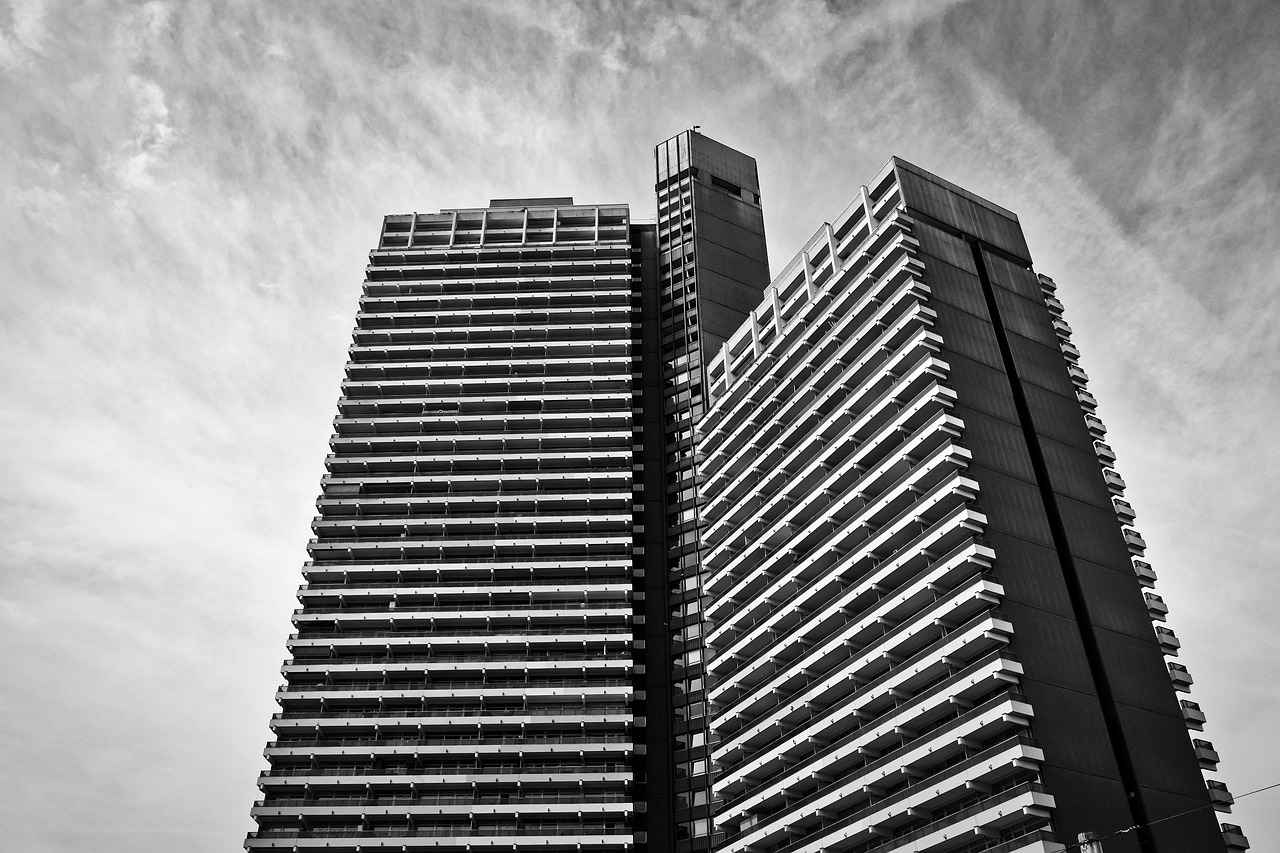
Conclusion: Enjoying Your Kimono Experience in Asakusa
Renting a kimono in Asakusa is not just about wearing traditional attire; it is an immersive cultural experience that connects you to Japan’s rich heritage. Asakusa, known for its historic sites and vibrant atmosphere, offers the perfect backdrop for this unique adventure. By following a few essential tips and insights, you can ensure that your kimono experience is both memorable and enjoyable.
First and foremost, it is crucial to choose the right kimono that suits your style and the occasion. Asakusa boasts a variety of rental shops, each offering different styles ranging from casual yukatas to formal furisodes. Take the time to explore your options and select an outfit that resonates with you.
When renting a kimono, consider size and fit carefully. Most rental shops provide professional assistance to help you find the perfect fit, ensuring that you feel comfortable throughout your experience. Additionally, understanding the rental duration and pricing is vital for budgeting your outing effectively. Rates can vary significantly based on the style of kimono and the rental period.
As you prepare for your kimono adventure, remember to practice proper wearing techniques. Layering the kimono correctly and accessorizing with traditional items like obi and obijime can enhance your overall appearance. Furthermore, be mindful of the traditional footwear, such as geta or zori, which completes the look.
Asakusa offers numerous photogenic locations for capturing beautiful memories in your kimono. Iconic spots like Senso-ji Temple and Nakamise Street provide stunning backdrops. Remember to consider the lighting and practice a few poses to make the most of your photo opportunities.
In conclusion, renting a kimono in Asakusa is a delightful way to engage with Japanese culture. By planning ahead and embracing the experience fully, you can create lasting memories that you will cherish for years to come.
Frequently Asked Questions
- What should I wear under my kimono?
It’s best to wear a simple, fitted outfit underneath your kimono, like a tank top and leggings. This ensures comfort and allows the kimono to drape beautifully.
- How long can I rent a kimono for?
Kimonos can typically be rented for a few hours to an entire day. Many shops offer flexible rental durations, so you can choose what suits your plans best.
- Do I need to bring my own accessories?
No need to worry! Most rental shops provide all necessary accessories, including obi and footwear, to complete your kimono look.
- Can I take my kimono rental home?
Unfortunately, kimono rentals are meant for temporary use only. You’ll need to return it at the end of your rental period, but you can take lots of photos to remember your experience!
- Is it easy to walk in a kimono?
At first, it might feel a bit different, but with practice, you’ll find it quite manageable! Just remember to take smaller steps and enjoy the experience.
